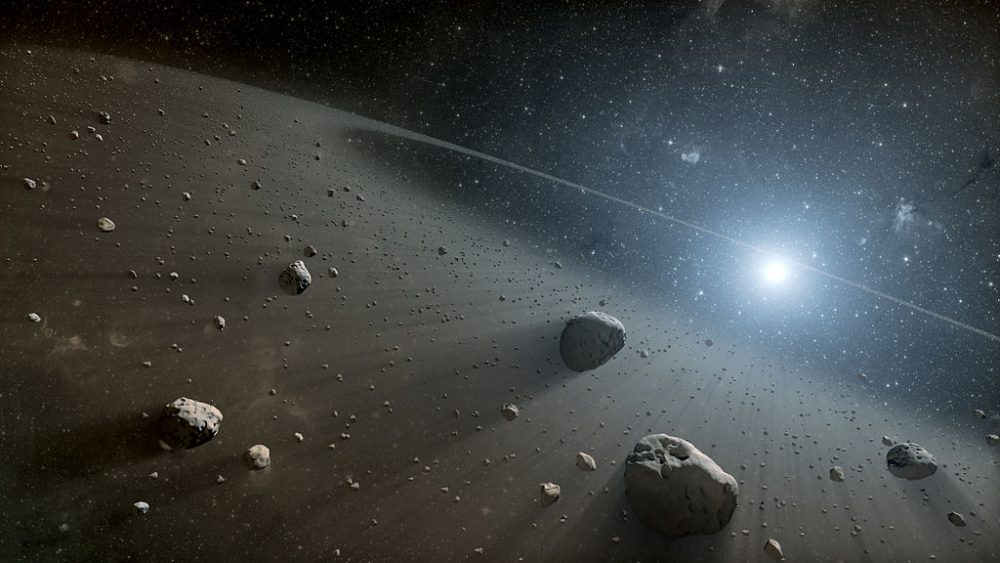
“Out on the lawn I lie in bed, Vega conspicuous overhead…” -W.H. Auden
I see plenty of stars in my line of work, and I’ve yet to see one I don’t like. But if had to choose a favorite, it would be the dazzling star Vega, the jewel of the tiny constellation Lyra, the Lyre. Intensely bright and blue-white in color, Vega conjurs memories of pleasant summer evenings spent stargazing and offers astronomers a remote stellar laboratory to help understand how stars evolve.
For northern stargazers, Vega lies nearly overhead in the summer months. It lingers in the autumn and early winter sky in the northwest along with the slightly less brilliant stars Deneb and Altair which together form the Summer Triangle (or Northern Triangle). In the winter, Vega serves as a beacon of spring as it rises low in the eastern morning sky during the darkest months of the year. At my latitude of 51oN and north, Vega never sets. For observers in most of the southern hemisphere, Vega sits just over the northern horizon in the evening in the southern winter months. In the most southern reaches of the Americas and Antarctica, it never rises above the horizon.
Stellar stronomers see Vega as the second most important star after the Sun. Vega was the first to be photographed (in 1850) and the first to have its spectrum recorded (in 1872). It was also one of the first stars to have its distance determined through measurement of its parallax.
Vega is also one of a handful of stars to serve as the pole star during the Earth’s 26,000 year precession about its rotational axis. In 12,000 BC, Vega was about five degrees from the pole, much further than the current pole star Polaris. By about 14,000 A.D., Vega will again lie just four degrees from the north celestial pole.
Through much of the 20th century, Vega also served as a baseline for the stellar brightness scale, and its magnitude was defined at +0.0 as a reference for all other stars. We now understand that Vega is slightly variable and not reliable enough to serve as a brightness benchmark. With an average magnitude of +0.026, it ranks as the fifth brightest star in the sky and the second brightest north of the celestial equator, just a shade fainter than yellow-orange Arcturus, another prominent star in the northern summer sky.
Vega also makes an interesting comparison to our sun. It spans about twice the sun’s radius and about 2.5 times our sun’s mass. The star spins rapidly once every 12.5 hours compared to the sun’s rotational period of 27 days, so it’s slightly squashed at the poles by centrifugal effects. With a surface temperature of 9,400K, Vega also burns about ten times faster than our sun. In its current stage of relatively sedate middle age, Vega is about 1/10 the age of the sun, about 500 million years old. But it will run out of fuel in another 500 million years, again about ten times faster than our sun, and for anyone on Earth left to see, the star will swell into an enormously bright red giant, flame out as an immense planetary nebula, then settle down as a dim white dwarf.

Like many stars, Vega becomes more interesting the more astronomers look. In the 1980s, a dusty disk of circumstellar debris was discovered around the star, somewhat like the Kuiper Belt in our solar system (see above). After years of searching, in 2021 researchers announced the discovery of a planet in close orbit around Vega – an ultrahot Neptune – that is gravitationally flung around the star every 2.43 days. As instrumentation improves, astronomers will continue the search for more planets around Vega. The star may have plenty of interesting stories left to tell us.
As such a prominent star, Vega has sparked many myths and legends. Its home constellation Lyra represents a celestial lyre in many cultures, and ancient Greeks beheld Lyra as the lyre of Orpheus with Vega as its handle, which is why it was once called the “Harp Star”. Chinese and Japanese legends regard Vega and the star Altair in the constellation Aquila as a ‘weaving girl’ and a ‘herd boy’ who wished to marry but were held apart by the gods on separate sides of the celestial river (the Milky Way). Once a year, on July 7, they’re allowed to cross and meet, an event marked by the Qixi and Tanabata festivals in China and Japan.
As I look at Vega, I contemplate not ancient stories or the vastness of space or the details of stellar astronomy, but time. The star lies about 25 light years away which makes it one of the closest bright stars to Earth with a look-back time well within the span of a human lifetime. Light I see tonight left the star when I was 25 years younger than today, still a 30-something with a few prospects in life. The light generated by the star today will arrive here when I’m 25 years older than now, a time when I’ll be lucky to have any prospects at all. How brief is a human life, and how quickly time passes. But the stars help get us through.
Share This: